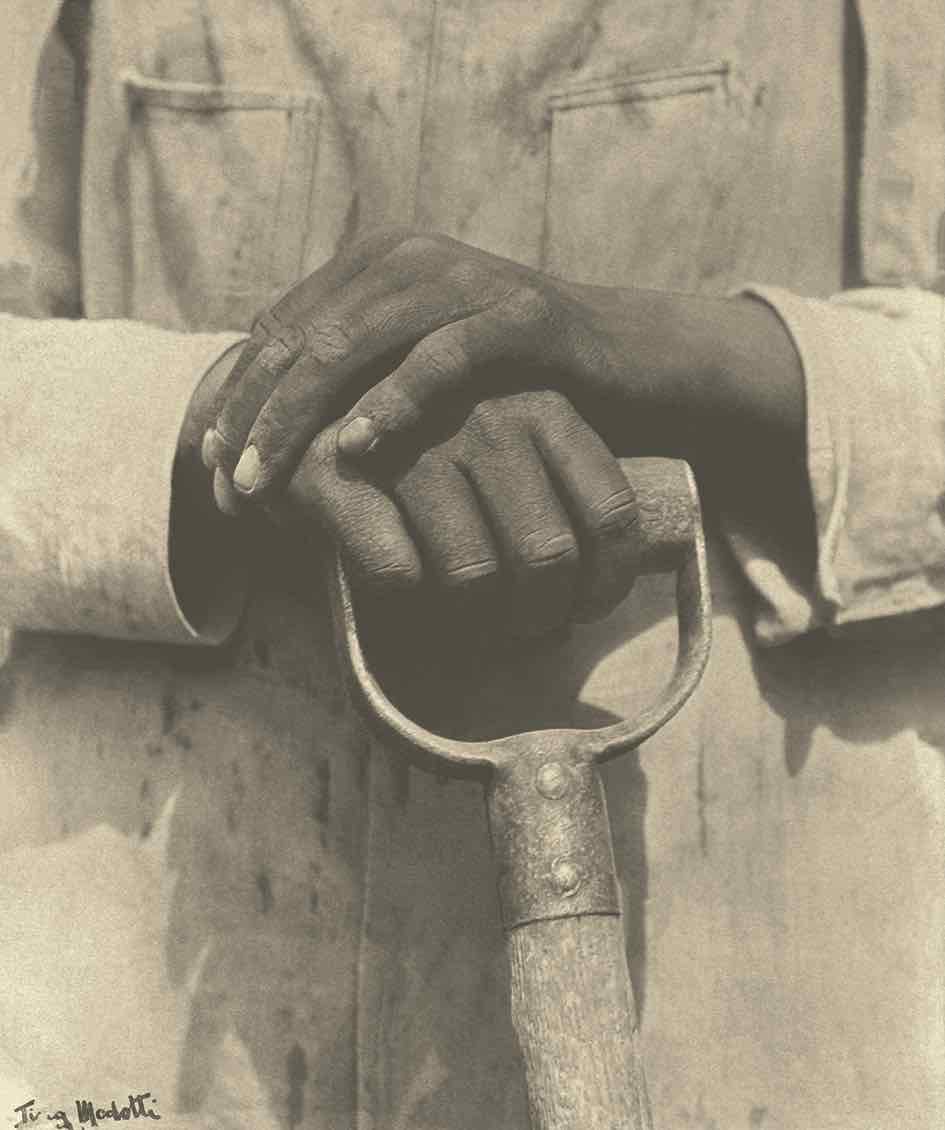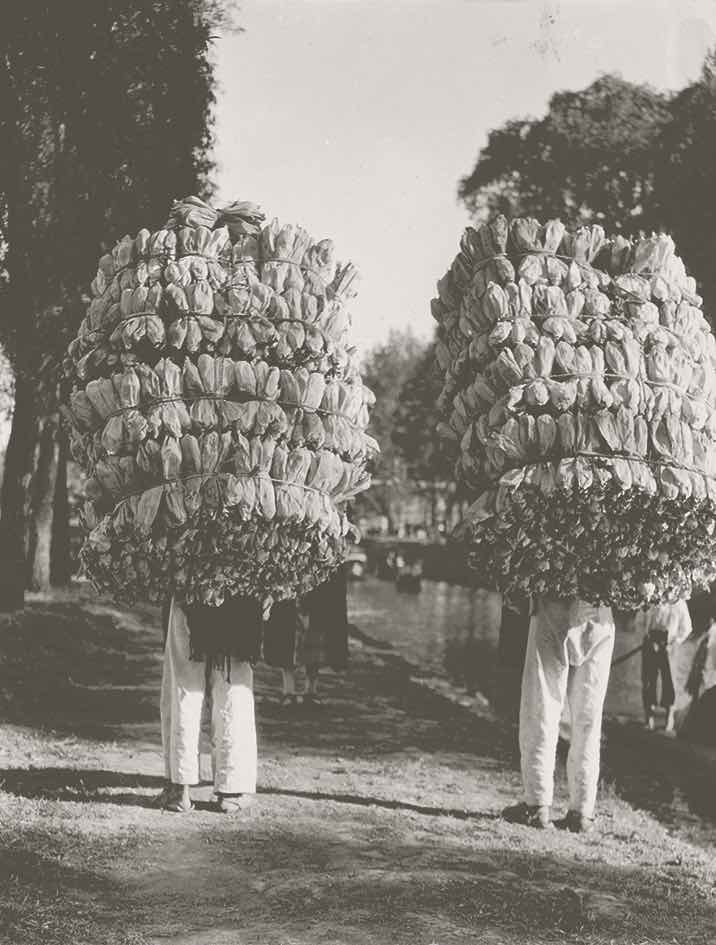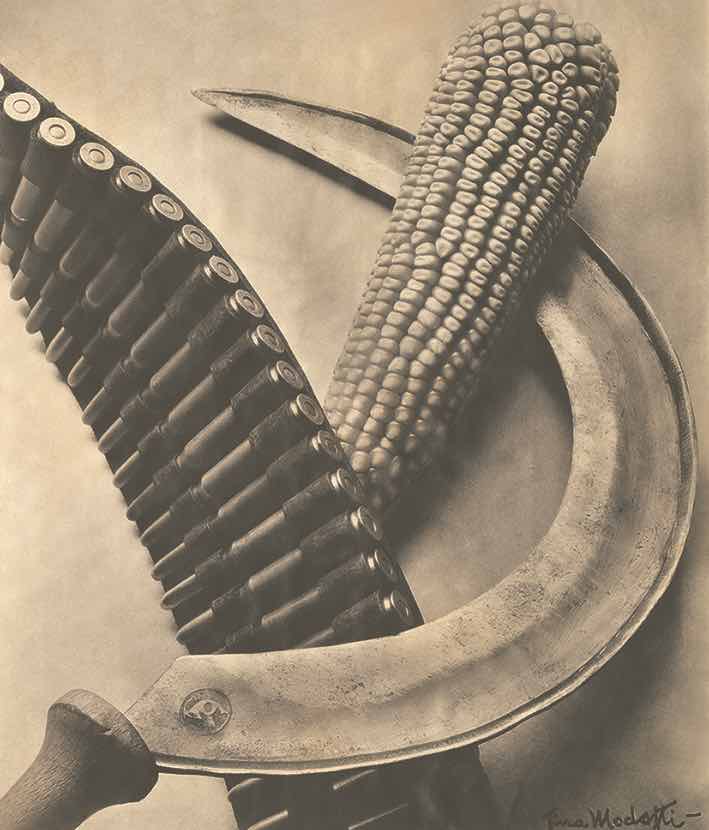
“Hands holding the handle of a shovel”, circa 1926-1927, Collection and archives of Fundación Televisa, Mexico
Tina Modotti is mostly known as a Mexican photographer today and yet she was born in Udine, near Venice in 1896, lived in Klagenfurt, Austria, as a child, and immigrated with her family to San Francisco at 16. There, she was a seamstress, became a model and acted in a mute film in Hollywood. This is where she met Edward Weston, whose fame eclipsed hers until recently. The Musée du Jeu de Paume gives her back her role as a leading artist in a beautiful exhibit “The Eye of the Revolution” where both her political activism and her artistic eye are united in 240 photographies. It took 6 years to curator Isabel Tejeda Martin, a professor at Universitad de Murcia in Spain, to collect all the precious documents.

Untitled, (Indians transporting corn leaves for the preparation of « tamales »), 1926-1929, San Francisco Museum of Modern Art.
She and Weston moved to Mexico City in 1923 and the first part of the exhibition is devoted to their parallel work in the first Mexican years. They opened a portrait studio together. They also toured the country and she focused on children and women. There is a beautiful portrait of Weston carrying a huge camera and smoking his pipe but also one of Stanislaw Pestkowski, the USSR Ambassador Plenipotentiary to Mexico in 1924-26. Tina was already close to the communist party, lived by now with Julio Antonio Bella, a Cuban close to Trotsky (who lived in Mexico) and would be expelled from the country in 1930 for her political activism. Two of her pictures of 1927, show a cartridge belt, a sickle and a guitar or a corn cob in a sign representing the International Communism. She then travelled to Berlin and her pictures of tourists seen from the back, are irresistible. The to the USSR where she works for the International Red Aid.
Her photographs of children, adobe houses and puppets are a fantastic memory of Mexican traditions at the time. A shot of a mother and baby in Tehuantepec, is almost abstract in its black and white shadows and is part of the pictures published in magazines at the time where she denounces the misery of the population and accentuates the important role of mothers bringing up their children. The photo of Indians carrying corn leaves on their back is amazing as is the man carrying a beam on his shoulder. The framing of the photos is close to constructivism and almost abstract.
Close to Diego Rivera and José Clemente Orozco, she photographs them working on their famous murals in Mexico City between 1924 and 1927. She will remain close to the communist party, lives in Paris with Vittorio Vidali, and Italian agent for Stalin, travels to Spain where she lives until Franco takes power in 1939. She then returns to Mexico under a false identity. She dies there in 1942 of a heart attack in a taxi.
Tina Modotti is at Musée du Jeu de Paume until May 12.
Share this Post


2 Comments on “Tina Modotti attracts the crowds at Jeu de Paume”
Dear Laure, très intéressant , mais Klagenfurt est en Autriche.
I love her work! Friends of mine Laura. Mulvey and PeterWollen curated a beautiful show of her work with Frida Kahlo at the Whitechapel gallery in 1982 . They also made an
extraordinary documentary about Frida Kahlo and Tina Modotti
“Frida Kahlo & Tina Modotti” by Laura Mulvey & Peter Wollen (1982) is a wonderful documentary about the lives and work of Frida Kahlo and photographer Tina Modotti.
“Both Frida Kahlo and Tina Modotti were artists working in Mexico in the aftermath of the Revolution, during a period of general cultural awakening and social change. Frida was married to Diego Rivera and was born, worked and died in the same ‘blue house’ in Coyoacan, while Tina Modotti emigrated to California with her family from Udine, Italy, and travelled to Mexico with Edward Weston, where she then stayed to become a photographer in her own right.
The broad similarities between their lives bind the film as a whole, reflecting on the representation of women, women’s art and feminist aesthetics; while the differences between them make up the content. ” (taken from Luxonline web site).
The film not only explores the two women’s artworks, but also includes rare footage of Modotti in the 1920 Hollywood film The Tiger’s Coat and and a few home movie shots of Frida and Diego at the
Blue House.
The film was co-directed by film theorists and avant garde filmmakers Laura Mulvey and Peter Wollen to coincide with the landmark exhibition they curated at the Whitechapel Art Gallery in 1982, also titled Frida Kahlo and Tina Modotti.